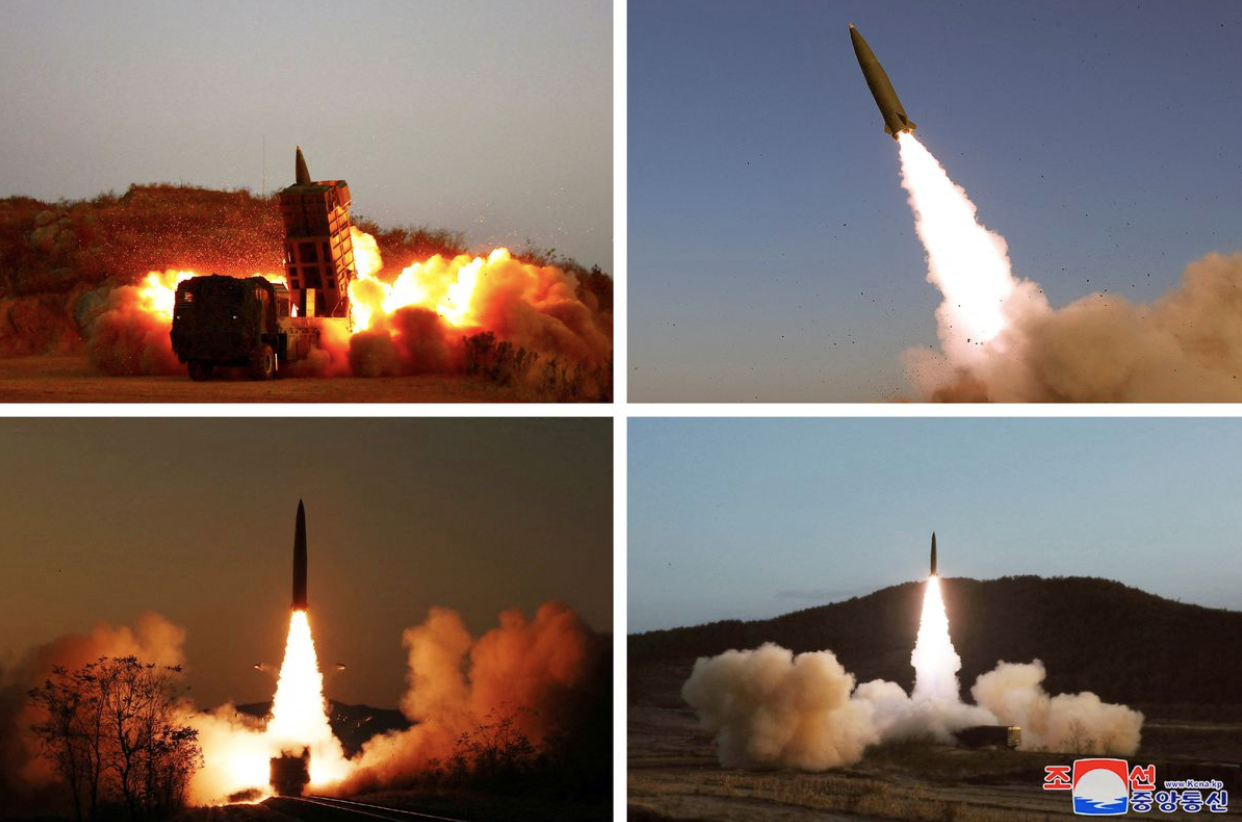Nuclear Tensions Rise Between North Korea and US Forces
People watch a North Korean missile launch at a railway station in South Korea on Nov. 9, 2022. Photo: Ahn Young-joon / AP
On Oct. 6, North Korea fired an “unforeseeable” missile over Japan and the US and South Korea’s matched responses. Now, one month later, that number has climbed to 59, with no signs of de-escalation on either side.
Throughout last week, the North fired more than 30 missiles in a stunning act of resentment against America’s missile tests. A report from Nov. 7 by the Korean Central News Agency, the state agency of North Korea, puts the number at 80, though various doubts surround the accuracy of the report. In any case, the Thursday tests included another ICBM missile launch, which prompted new evacuation alerts in northern Japan, and four other ballistic missiles on Saturday alone.
This aggressive turn was matched by the US and South Korea. In a joint military exercise named “Vigilant Storm,” the US fired two supersonic bombers, known as B-1Bs, over South Korea for the first time since 2017, alongside fighter jets. The exercise counted 240 warplanes, and lasted four days.
Concerningly, South Korea further warned that North Korea is prepared to test a nuclear weapon — for the first time since 2017.
North Korean shots of recent national missile tests. Photos: KCNA / Reuters
These on-the-ground tensions are further reflected in the halls of diplomacy. On Nov. 4, the US Ambassador to the UN, Linda Thomas-Greenfield, slammed North Korea’s missile tests, as well as the Security Council’s perceived inaction on the matter, as “appalling.” Thomas-Greenfield further asserted that the Council had “bent over backwards to justify the DPRK’s repeated violations.”
For its part, North Korea characterized its uptick in testing as merely a defensive response to the “reckless military hysteria” of the US and South Korea, anticipating an “unstable confrontation.” The KCNA confirmed the tests were simulations of what the regime would do to its enemies if sufficiently provoked.
Although these fresh tensions are undoubtedly cause for concern, they are rooted in a conflict reaching back to the Korean War. Tensions between North Korea, the US and its ally South Korea tend to ebb and flow, and reached a particular crescendo during President Trump’s term as the former leader leveled threats against his North Korean counterpart Kim Jong-Un. In 2018, the North Korean strongman agreed to negotiate a deal where he would give up his nuclear weapons, and met twice with President Trump at a summit in the DMZ. Nevertheless, Pyongyang only continued to expand the nuclear weapons program to a point where its arsenal has never been larger.
For its part, the Biden Administration intends to trod a middle path between Trump and Obama’s respective approaches, where outright denuclearization is weighed against the realities of negotiation.
With these rising tensions, however, it is unclear whether the Biden Administration will be able to maintain such a diplomatic approach.


